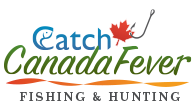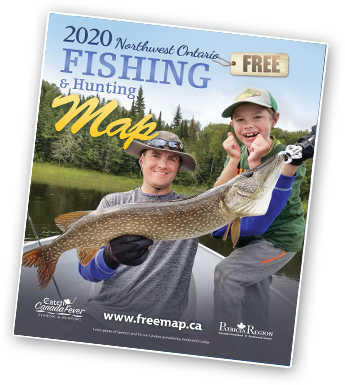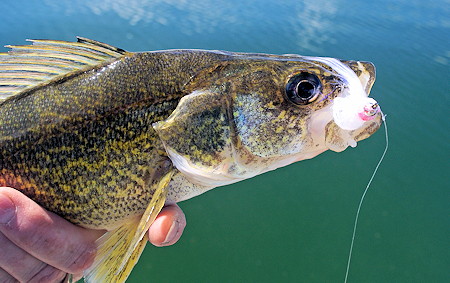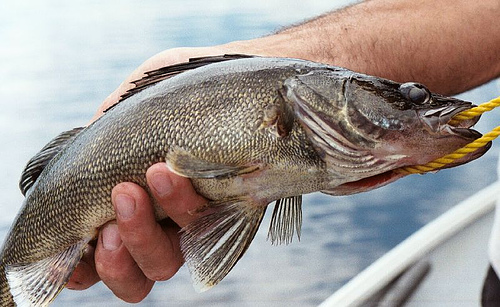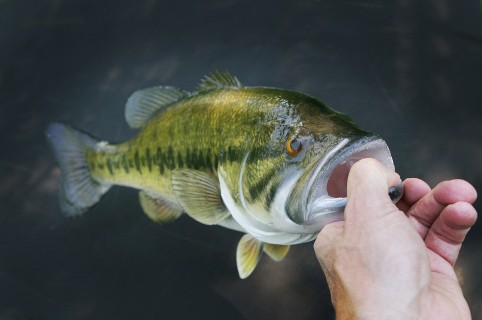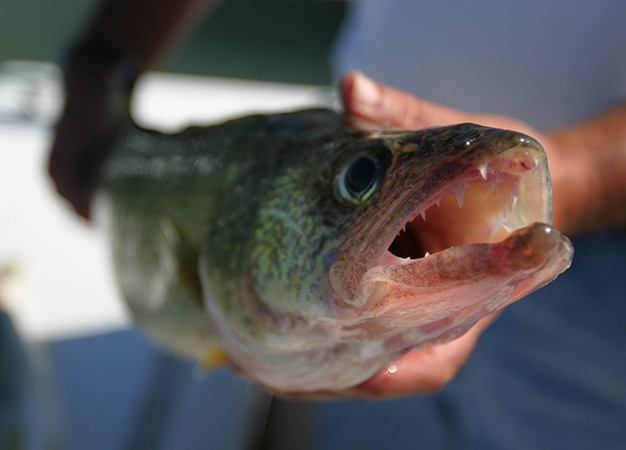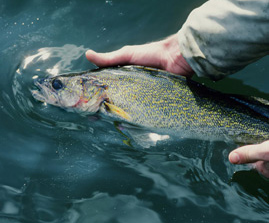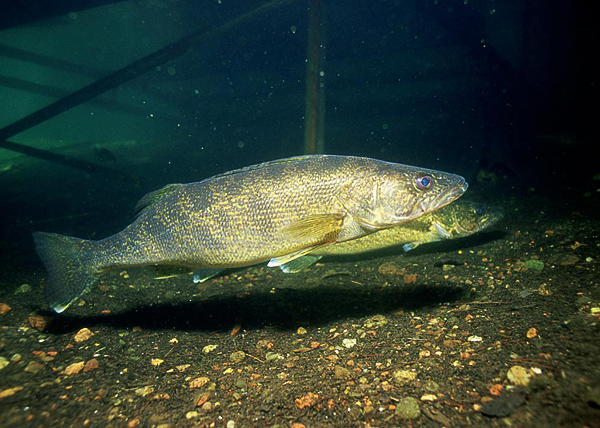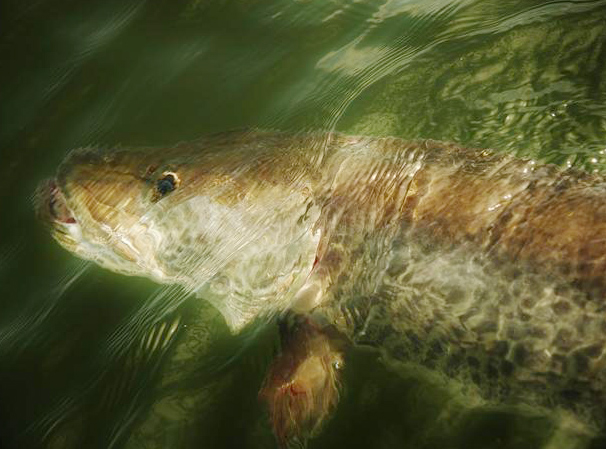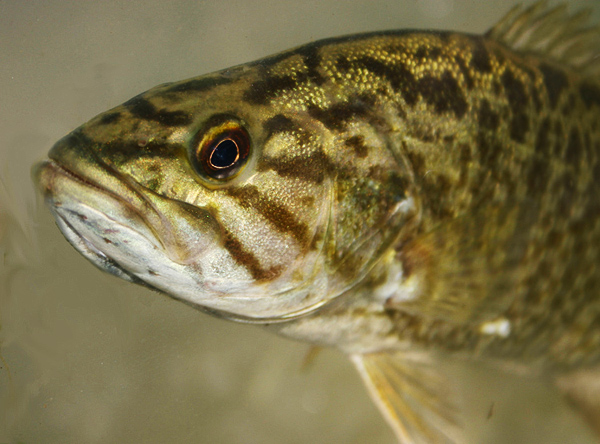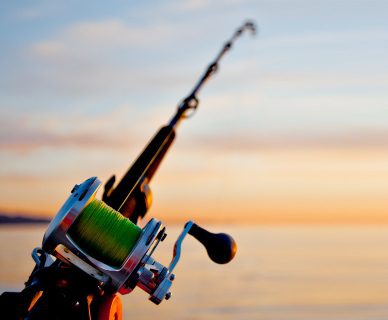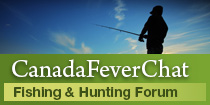It was late June and early morning. We were fishing for muskies, and at that time in the season, few presentations beat a trolled spinner bait. We meandered across a weedy break-line into 5 feet of water and then turn towards deeper water of 20 feet. Our rod tips telegraphed the pulsing throb of tandem-blade baits.
Then, on a turn from shallow to deep water, my reel clicker sang.I grabbed the rod and felt pounding head shakes. the flat surface broke, and a 44-inch muskie was air born! After a few exciting runs, the fish was landed, photographed and released.
Top-water 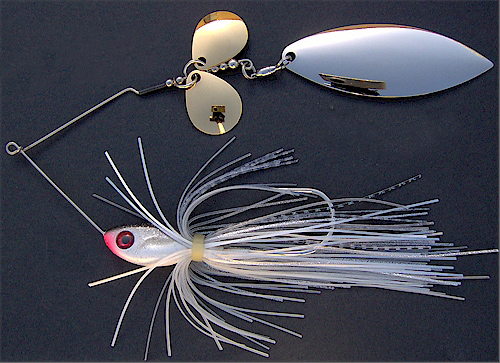 Muskie trolling spinnerbaits allow you to quickly probe prime locations, such as weed-flats and break lines, searching for actively feeding fish to enticing neutral ones to strike. You can troll spinner baits at 3 to almost 10 miles per hour. Speeds that are difficult to attain or maintain when casting and reeling.
Muskie trolling spinnerbaits allow you to quickly probe prime locations, such as weed-flats and break lines, searching for actively feeding fish to enticing neutral ones to strike. You can troll spinner baits at 3 to almost 10 miles per hour. Speeds that are difficult to attain or maintain when casting and reeling.
The safety pin design and turned up single hook helps to keep spinner baits fairly free of weeds, allowing muskie trolling in slop. the blades flash and vibrate, triggering strikes, but also helping the muskie locate the lure. Trolled spinner baits have a high hooking percentage, unlike crankbaits or jerkbaits where the baits hard body often interferes with a hook-set. Bucktail always gives way to steel hooks. when selecting a spinner bait for this type of fishing, make sure it can withstand the abuse of being trolled at high speeds. Lures made with smaller diameter wire can easily bend or break after a few fish. heavier gauge wire baits will hold up and take a beating.
Look for tandem blades in any combination of Colorado, Indian, or willow-leaf blades. Tandem blades help keep the entire bait from spinning on turns or at a high speed. also, check make sure to check the trailing blade is attached wit ha ball bearing swivel. Regular swivels may brake at high speeds, so replace them with stronger ball-bearings.
Tie baits with the longest original muskie bucktails available. sizes range from to 12 inches with super-size baits up to 16 or even 20 inches. A range of weights between 1.5 and 6-oz in natural and hot colors should cover most trolling speeds and water conditions.
The smaller baits are better for post-spawn fishing, but larger baits are the ticket for big muskies from early summer on. Most of the big spinnerbaits have two or three single hooks. treble trailers are available, but single hooks help keep the baits weedless and also make it easier to release fish unharmed. tinsel or a 6 to 8 inch plastic grub tied onto the trailer provide extra enticement.
When using a short arm, 1.5- to 2-oz spinner bait, run it between 75 to 125 feet behind the boat, because this way it’s out of the prop wash area. you want the bait to be popping out of the water every 5 to 10 seconds. It is believed this popping noise helps to attract muskie, and for it to be effective, the bait must be out of the prop wash area. Also, to keep these lighter bait breaking the surface, the boat should be trolled between 3 and 4.5/mph.
Trolling with long lines also allows you to present baits over structures normally to shallow to drive over with the boat. For example, To bring the boat over a 2 foot deep rock pile on a weedy point, he drives the boat around the rock pile at a safe depth. then, after passing the point he turns the boat shallow, and the trailing lure is pulled across he target area.
When trolling above 4.5 Mph, troll the bait just above the surface, not popping out of the water. At higher speeds popping loses its effectiveness.
Most pro anglers believe at times muskie are attracted to the sound of the boat and the disturbance of the prop wash. When speed trolling Baits run beautifully on the side of the prop wash. They dance because of the constantly changing currents.
When trolling heavier baits on short lines in shallow water, you must keep them under the surface to avoid snags. the resistance of bait blades can help it ride high in the water column. To troll at the same depth, a 6-oz willow-leaf requires a shorter line than a colorado-blade bait of the same weight. Running shorter lines of about 15 to 20 feet can be effective for tight maneuverability and for precisely fishing a weed line edge or other cover.
When fishing a deep weed flat, intermittently slow down, allowing baits to fall to the weed tops, and then speed up so the baits shoot forwards again. Or use a heavier bait that runs just above the weeds “ticking” the tops, which can trigger strikes, too.
When trolling weed tops parallel to the shoreline you may cross points that should be fished too, Just turn to follow the contour of the point, and change the speed of the bait as it crosses over the point by either increasing boat speed or turning the boat.
A bait on the outside of a turn is pulled faster while a bait on the inside of a turn slows and stops. Many strikes come just on or just after a turn. when a fish hits on a turn, not which side the bait was on. This is a good indication of how fast you should troll. slow down if a strike comes on the inside; speed up if it’s on the outside of the turn.
Trolling in an “S” pattern can be helpful. when working weed edges or break-lines. Depending on their mood, and whether or not they are feeding, muskies may be in 3 feet of water in thick weeds or suspended over open water. Meandering along a brake-line or weed edge allows you to different depths and speeds, as well as structures and covers.
Spinnerbaits can also be effective when trolling over rock bottom. It is suggested to use heavier baits, 4 to 5-oz, to fish deeper rock edges or points. After passing a point, cut the motor and drop the bait down, and count to five, and then engage the throttle again. This causes the bait to sink then swim back up to the surface. a lot of the time it’s on the up lift when a fish will hit. A muskie that sees a bait suddenly shoot to the surface might think it’s a bait fish trying to escape, and these big predators will react.
High speed may be a strike trigger, but sometimes, neutral fish will only take a bait presented at a certain speed. If you maintain mph you may miss fish that would have reacted at 4 mph. you must experiment until you find what the fish want.
To properly troll spinnerbaits, you need a sonar unit to help you identify structure and cover while on the move. A speedometer or GPS unit helps with monitoring and maintaining trolling speed. A GPS unit is also handy to mark structure and plot trolling paths. One tip suggested when using a GPS is to slowly drive directly along a weed edge or breakline, plotting it in the unit. then later in the day and precisely troll this same path, varying presentations and tracking the new rolling routes, too.
Rod holders must be strong enough to withstand a muskies strike. with rod holders, you can maintain rod position and subsequently the path of the baits.
Rods set off the boat’s side should be angled slightly towards the stern to reduce strain, concentrating it in the tip. Angle rods down towards the water to keep baits from popping out of the water. Slightly submerge the tip to collect floating weeds, preventing them from traveling down the line and collecting on the bait.
If the rod tip is above the water, monitor the vibration in the rod tip. when the tip stops twitching, the lure is likely fouled with weeds. Removing the rod from the holder and tugging it forwards a few times often rips the weeds, allows you to continue the trolling pass without reeling in and resetting the line.
Longer rods, between 7 and 8 feet, are becoming the norm for trolling, as they keep baits farther out form the boat when set off to the side. rods should be medium-heave to heavy action. Reels with higher gear ratios are crucial to quickly land and release muskies and minimize stress to the fish.
Superbraid lines are replacing dracon for muskie trolling, and 60- to 100- pound test is acceptable. When you get a hit, quickly grab the rod out of the holder and set the hook. But do not set the hook too hard. Trolling at a high speed is often enough by itself to set a hook. After the hook set, cut the engine to fight the fish.
Trolling spinnerbaits for top-water muskies allows you to cover vast stretches of water, increasing the odds of you finding a feeding muskie. take the chance to explore new areas you’ve never fished before, or to better fish know stretches of water. don’t be afraid to troll fast for muskies; there freshwater brutes are notorious for slamming speeding spinner baits. Make sure you have the tools and the knowledge to release the fish unharmed. Bring a landing net or cradle, jaw spreader, long nosed pliers, hook remover, hook cutter, measuring tape and camera.
Photos are a great way to preserve the memory of a catch. Just remember to hold your breath when you hoist a fish from the water. when you need to breath, the fish does too, so quickly return it to the water. When you lift the fish, support its weight and hold it horizontally. Holding a fish vertically can stress its vital organs.

